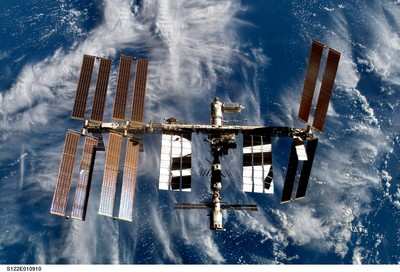Shoebox-Sized Gadget Can Sniff Out Harmful Chemicals
NASA astronauts on Space Shuttle Endeavour's STS-126 mission
will install an instrument on the International Space Station that
can "smell" dangerous chemicals in the air. Designed to help
protect crew members' health and safety, the experimental "ENose"
will monitor the space station's environment for chemicals such as
ammonia, mercury, methanol and formaldehyde.

The ENose fills the long-standing gap between onboard alarms and
complex analytical instruments. Air-quality problems have occurred
on the International Space Station, space shuttle and Russian Space
Station Mir. In most cases, the chemicals were identified only
after the crew had been exposed to them, if at all. The ENose,
which will run continuously and autonomously, is the first
instrument on station that will detect and quantify chemical leaks
or spills as they happen.
"The ENose is a 'first-responder' that will alert crew members
of possible contaminants in the air and also analyze and quantify
targeted changes in cabin environment," said Margaret A. Ryan, the
principal investigator of the ENose project at NASA's Jet
Propulsion Laboratory, or JPL, in Pasadena, Calif. JPL built and
manages the device.
Station crew members will unpack the ENose on December 9 to
begin the instrument's six-month demonstration in the crew cabin.
If the experiment is successful, the ENose might be used in future
space missions as part of an automated system to monitor and
control astronauts' in-space environments.
"This ENose is a very capable instrument that will increase crew
awareness of the state of their air quality," said Carl Walz, an
International Space Station astronaut and Director for NASA's
Advanced Capabilities Division, which funds the ENose. "Having
experienced an air-quality event during my Expedition 4 mission on
the space station, I wish I had the information that this ENose
will provide future crews. This technology demonstration will
provide important information for environmental control and
life-support system designers for the future lunar outpost."
Specifically, the shoebox-sized ENose contains an array of 32
sensors that can identify and quantify several organic and
inorganic chemical species, including organic solvents and marker
chemicals that signal the start of electrical fires. The ENose
sensors are polymer films that change their electrical conductivity
in response to different chemicals. The pattern of the sensor
array's response depends on the particular chemical types present
in the air.
The instrument can analyze volatile aerosols and vapors, help
monitor the cleanup of chemical spills or leaks, and enable more
intensive chemical analysis by collecting raw data and streaming it
to a computer at JPL's ENose laboratory. The instrument has a wide
range of chemical sensitivity, from fractional parts per million to
10,000 parts per million. For all of its capabilities, the ENose
weighs less than nine pounds and requires only 20 watts of
power.

The ENose is now in its third generation. The first ENose was
tested during a six-day demonstration on the STS-95 shuttle mission
in 1998. That prototype could detect 10 compounds but could not
analyze data immediately. The second-generation ENose could detect,
identify and quantify 21 chemical species. It was extensively
ground-tested. The third-generation ENose includes data-analysis
software to identify and quantify the release of chemicals within
40 minutes of detection. While it will look for 10 chemical species
in this six-month experiment, the new ENose can be trained to
detect many others.
 ANN's Daily Aero-Linx (04.15.24)
ANN's Daily Aero-Linx (04.15.24) Classic Aero-TV: 'No Other Options' -- The Israeli Air Force's Danny Shapira
Classic Aero-TV: 'No Other Options' -- The Israeli Air Force's Danny Shapira Aero-News: Quote of the Day (04.15.24)
Aero-News: Quote of the Day (04.15.24) Airborne 04.16.24: RV Update, Affordable Flying Expo, Diamond Lil
Airborne 04.16.24: RV Update, Affordable Flying Expo, Diamond Lil ANN's Daily Aero-Term (04.16.24): Chart Supplement US
ANN's Daily Aero-Term (04.16.24): Chart Supplement US




